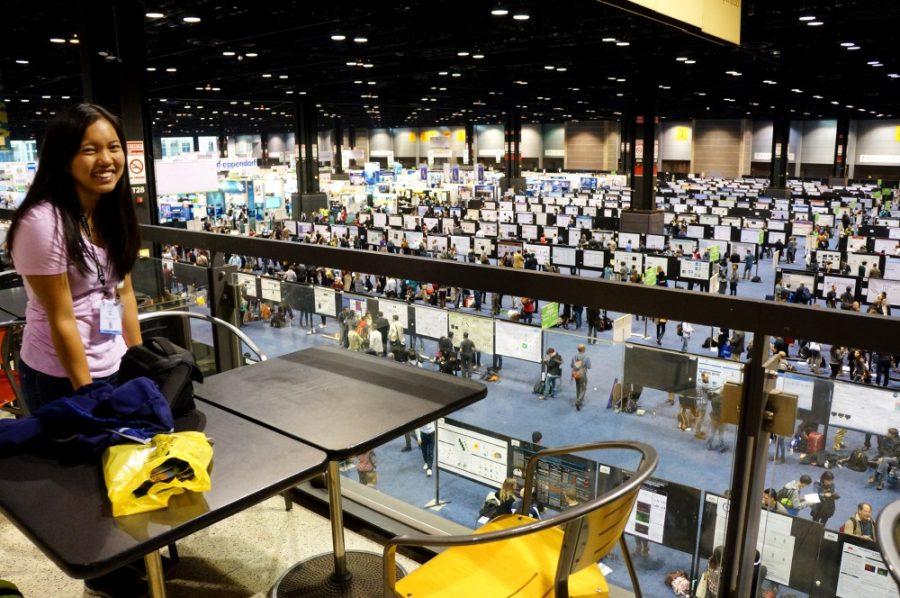Approximately 25 UA undergraduates attended the 2015 Society for Neuroscience meeting, held Oct. 17-21 in Chicago’s McCormick Place.
Also in attendance were approximately 29,000 clinicians, researchers, engineers and others in the field of neuroscience.
The conference is held annually and moves from location to location across the country to places such as San Diego and Washington, D.C.
“The conference feels a lot like a massive neuroscience theme park,” said Alison Comrie, a junior studying neuroscience and cognitive science. “Instead of exploring [Mickey’s] Toontown, we traverse hundreds of research posters in rows that would fill a football field; we get our adrenaline rushes not from California Screamin’, but from speeding from one talk on Alzheimer’s therapies to the next talk on manipulating memories through genetic methods.”
For some students, funding for the trip was a big issue. Costs such as flight tickets, hotels and conference fees amounted to approximately $1,000 dollars, according to Lindsey Chew, a sophomore studying neuroscience and cognitive science.
Some had the trip funded by organizations such as the Neuroscience and Cognitive Science Summer Research Program and Nu Rho Psi, the national honor society for neuroscience, among others. Eleven students were able to attend the conference thanks to financial support from the Associated Students of the University of Arizona.
Chew’s trip was funded by a combination of support from Nu Rho Psi, an Honors Alumni Legacy Grant from the Honors College and even her research lab. Chew traveled to the conference with a postdoctoral fellow from her lab named Aubin Moutal, who traveled to the conference in search of collaboration.
“One of the key things that [my lab was] looking for was collaboration with different labs all over the world, especially sharing different kinds of materials, … things that take a lot of work to create, like plasmids and purifying proteins.” Chew said. “It’s very time consuming, but if we have something they can use and they have something we can use, then we can … build a relationship internationally and foster international science.”
Some students even had the chance to present at the conference.
“Just knowing that these people have decades of knowledge on top of me, it puts the pressure on, but it’s amazing to see them understand your research and to see the questions they’ll ask you,” said Kendra Liu, a senior studying neuroscience and cognitive science. “It’s interesting to have that exchange of knowledge and, honestly, that’s what [Society for Neuroscience] is all about. It can help you as a scientist but also propel your project into new directions.”
Posters from undergraduates made up a small population of the posters presented at the Society for Neuroscience meeting, although anyone from the neuroscience community is able to apply to present their poster during the conference.
“I think that really goes back to why the UA is such a top-tier research school, because undergraduate students have this opportunity to participate in research, be a fundamental, integral part of a lab and actually answer questions that no one has asked before,” Liu said. “Because of that opportunity, the quality and the way we approach research is equivalent to graduate students. That’s why undergraduates at UA really have a presence at [the Society for Neuroscience].”
Follow Connie Tran on Twitter.









